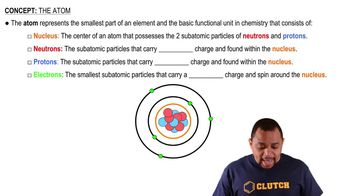Here are the essential concepts you must grasp in order to answer the question correctly.
Electron Configuration
Electron configuration describes the distribution of electrons in an atom's orbitals. It is represented using a notation that indicates the energy levels and sublevels occupied by electrons. For example, the electron configuration of a neutral boron (B) atom, which has 5 electrons, is 1s² 2s² 2p¹, while fluorine (F), with 9 electrons, has the configuration 1s² 2s² 2p⁵.
Recommended video:
Electron Configuration Example
Atomic Structure
The atomic structure refers to the arrangement of protons, neutrons, and electrons within an atom. The nucleus contains protons and neutrons, while electrons orbit the nucleus in defined energy levels. Understanding atomic structure is essential for determining electron configurations, as it helps explain how electrons fill available orbitals based on energy levels and the principles of quantum mechanics.
Recommended video:
Periodic Table Trends
The periodic table organizes elements based on their atomic number and electron configurations, revealing trends in properties such as electronegativity, ionization energy, and atomic radius. Elements in the same group often exhibit similar electron configurations in their outer shells, which influences their chemical behavior. For instance, boron and fluorine are in different groups, leading to distinct electron configurations and reactivity patterns.
Recommended video:




